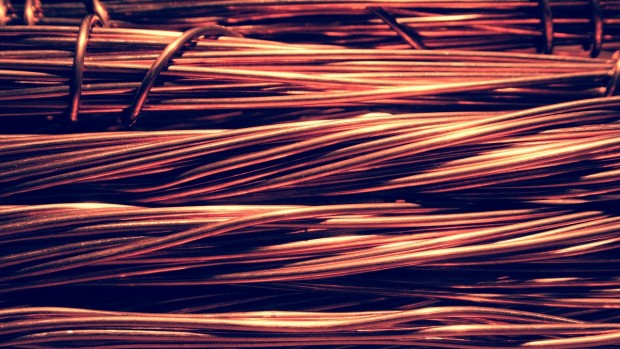Copper: A Key Step on the Road to Net Zero, if It Can Be Mined Sustainably
The global push towards a sustainable future is accelerating, and with it, the demand for copper is soaring to unprecedented heights. Recent copper price trends approached a 15-month high in part due to supply constraints, and a recent study that examined 120 years of global copper mining data revealed a looming copper shortfall if mining is not sharply accelerated.
Indeed, as one of the cornerstones of renewable energy infrastructure and electric vehicle (EV) technology, copper is being hailed as the "new oil"—a critical commodity that will shape the coming decades. However, the burgeoning demand for copper presents a significant challenge: without a substantial increase in mining, the green transition may falter—and yet it will be vital to ensure that this mining is itself carried out sustainably. The recent certification of Tenke Fungurume Mining S.A. (TFM) in the Democratic Republic of Congo (DRC) as the first mine in Africa to receive the Copper Mark, an internationally recognized certification of responsible practices, is a promising step towards addressing this challenge sustainably.
Near-insatiable demand for copper as the green transition takes hold
Copper's core role in the vital green transition cannot be overstated. A recent study published by the International Energy Forum underscores that nearly 200 new large copper mines will be needed by 2050 to meet global net-zero targets. Indeed, the study found that just to sustain current needs, humanity would need to mine 115% more copper by 2050 than has been mined throughout all of history—and this doesn't even include the sharply rising demand for copper as part of green energy efforts.
For instance, an electric vehicle requires 2.5 times more copper than a conventional internal combustion engine vehicle. Similarly, renewable energy infrastructure such as wind turbines and solar panels require significantly more copper compared to traditional fossil fuel-based power generation.
The urgency of this demand is reflected in soaring copper prices, which have reached near-historic highs. Analysts predict that copper prices could climb as high as $15,000 per ton, driven by speculative buying and genuine supply constraint—a price surge that underscores the critical role copper will play in the global economy in the decades to come, particularly as countries ramp up their renewable energy and EV production capacities.
Demand crunch could be a bottleneck threat on the path to a green future
Despite the clear necessity for increased copper production, the industry faces significant hurdles. The lengthy and complex permitting process for new mines is one major bottleneck. On average, it takes about 20 years from the discovery of a copper deposit to the commencement of mining operations—a delay that is exacerbated by regulatory hurdles, which can stymie efforts to expand copper supplies.
Moreover, recent supply disruptions have further strained the market. Production cuts in major copper-producing regions, such as the Democratic Republic of the Congo, have contributed to the tight supply. For example, the Ivanhoe Mines' Kamoa-Kakula complex in the DRC—the world's third-largest copper mining complex—recently announced a 6.5% reduction in quarterly production, illustrating the supply-side challenges that underscore the pressing need for new sources of copper.
A beacon of responsible mining: TFM's Copper Mark certification an encouraging sign
The necessary uptick in mining, however, must itself be carried out sustainably, in keeping with the principles of the green transition it is meant to support. In this regard, the recent Copper Mark certification of Tenke Fungurume Mining S.A. (TFM)—one of the largest copper & cobalt producers in the DRC—is an encouraging sign. TFM, a subsidiary of CMOC Group Ltd., is the first mine in Africa to receive this prestigious certification, which recognizes its adherence to stringent environmental, social, and governance (ESG) standards. The Copper Mark certification is based on independent third-party assessments that evaluate a mine's compliance with 32 criteria of the Risk Readiness Assessment (RRA), including legal compliance, environmental management, and greenhouse gas emissions.
This certification not only underscores TFM's commitment to sustainable mining practices but also enhances its reputation on global exchanges such as the London Metal Exchange (LME). By meeting Copper Mark's standards, TFM can command premiums for its copper products, which in turn incentivizes other mining companies to adopt similar responsible practices.
Path forward will require innovation and sustainable practices
While the Copper Mark certification of Tenke Fungurume is a positive development, the broader mining industry must embrace innovation and sustainable practices to meet the escalating demand for copper. The Bradshaw Research Institute for Minerals and Mining highlights the need for new mining methods that minimize environmental impact and improve efficiency. Innovations such as advanced recycling techniques and the development of low-impact mining technologies are crucial for reducing the environmental footprint of copper extraction.
Furthermore, enhancing copper recycling efforts can play a significant role in mitigating supply shortages. Despite the well-established economic sector for copper recycling, a considerable amount of copper still ends up in landfills. Closing this loop is essential for ensuring the sustainable copper supply that is vital to power the global transition to renewable energy and electric vehicles.
The global transition to renewable energy and electric vehicles hinges on the availability of copper. As demand for this critical metal continues to rise, it is imperative that the mining industry scales up production sustainably, balancing this increased production with stringent ESG standards, all while fostering innovation in mining technologies and enhancing recycling efforts. Only by adopting such a multifaceted strategy can we ensure that copper remains the cornerstone of the green transition, driving us toward a sustainable and prosperous future.
See Now: NASA's Juno Spacecraft's Rendezvous With Jupiter's Mammoth Cyclone
* This is a contributed article and this content does not necessarily represent the views of scienceworldreport.com





Join the Conversation